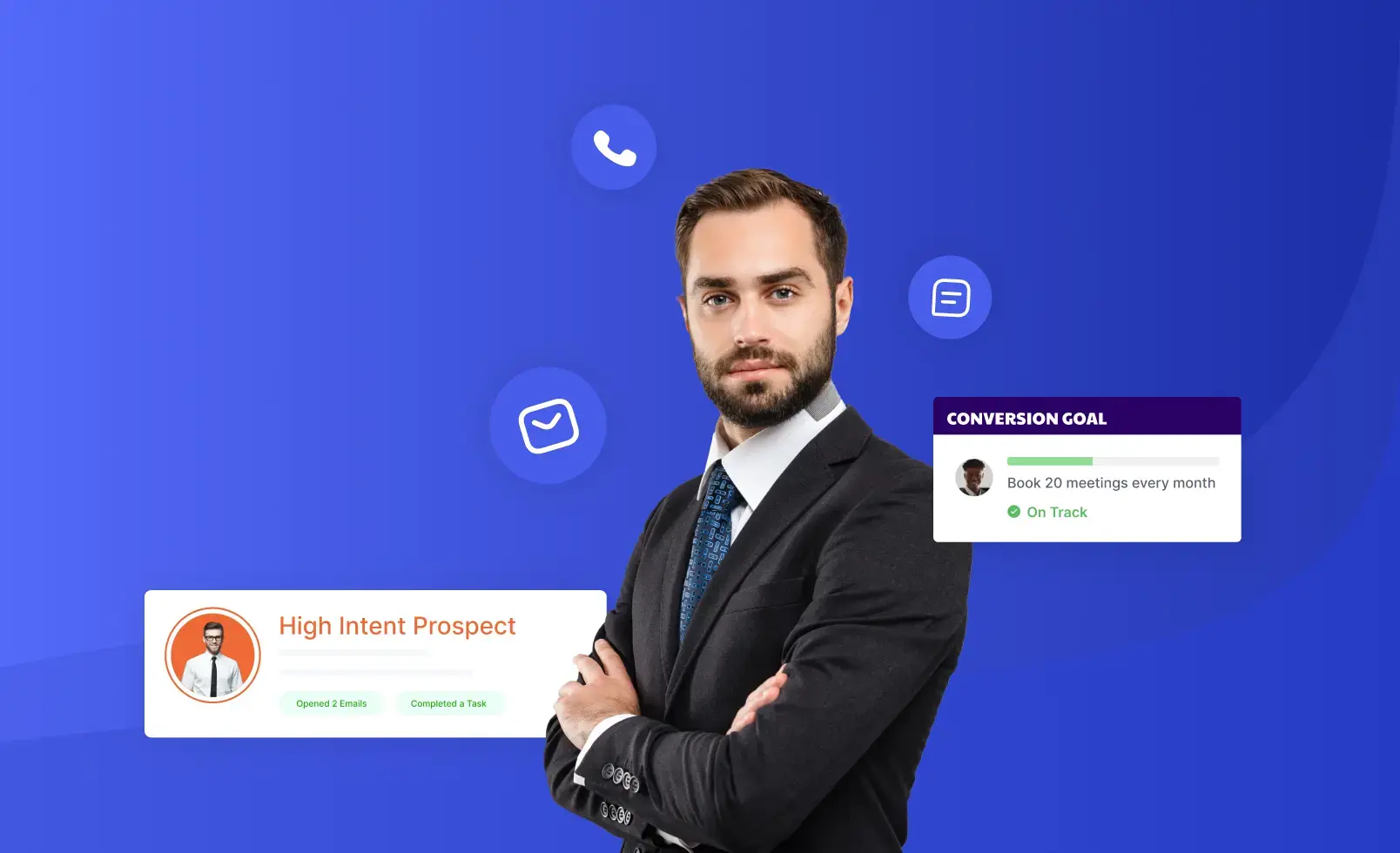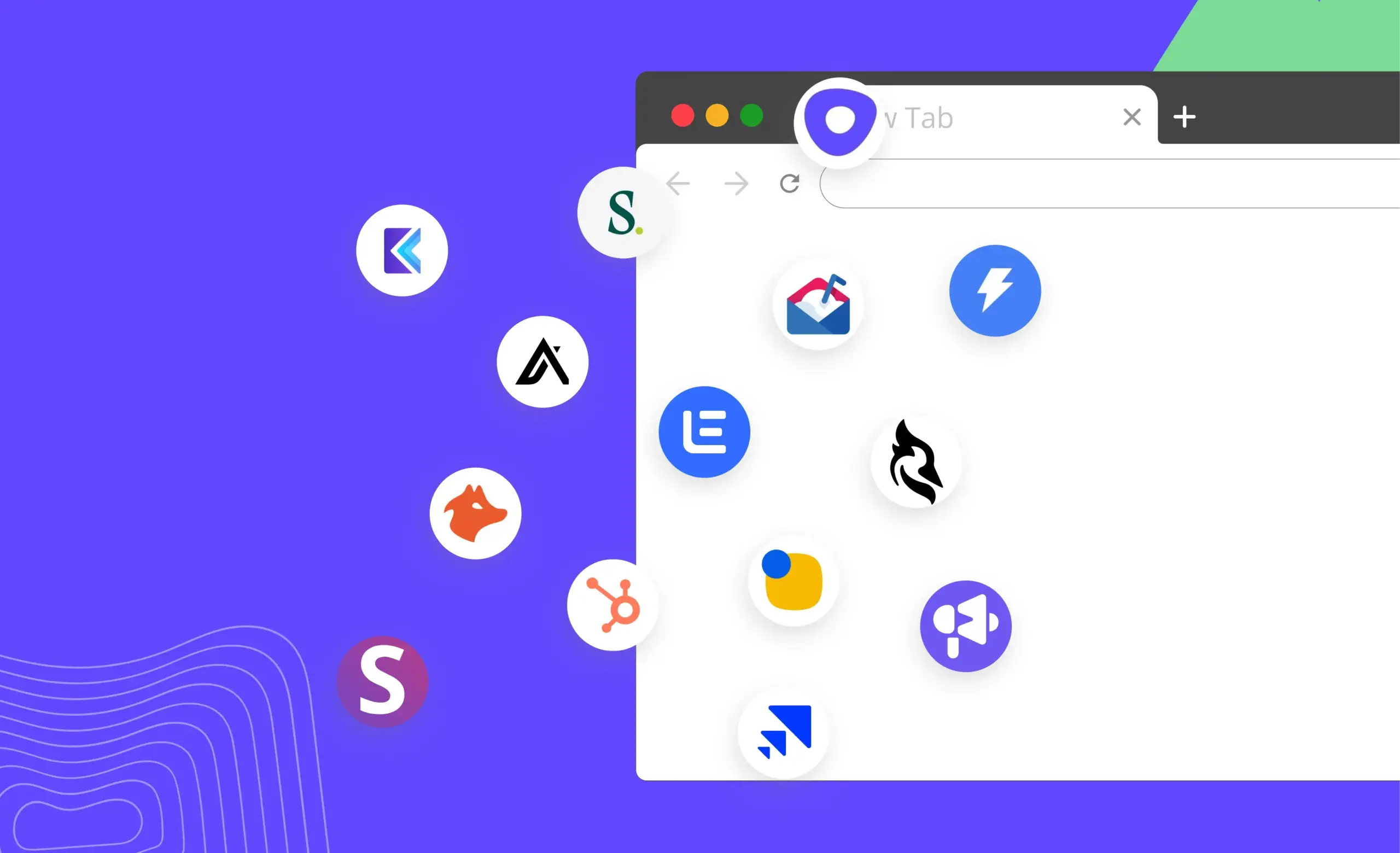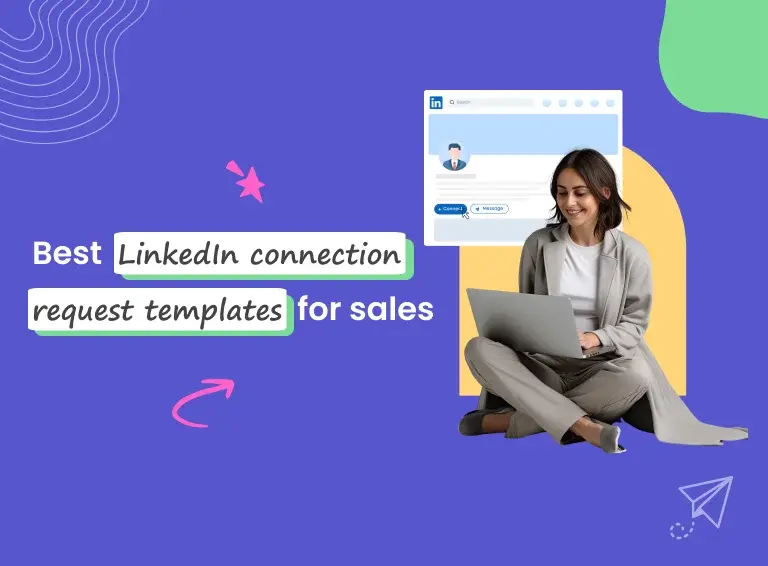Traditionally, salespeople persuaded buyers to purchase a product or a service from the get-go.
However, since the dawn of the information age, consumer behavior has changed widely.
B2B Prospects spend around 27% of their buying journey researching independently before entering the sales funnel.
New-age prospects don’t want contact with reps and delve into research instead of waiting for an intervention. Leaving fewer opportunities for salespeople to influence customer decisions.
This has changed the way SDRs function: from selling to serving.
Now more than ever, it is essential for SDRs to establish trust and build relationships with their prospects before pitching a product or a service.
This means modern SDRs need an entirely new set of skills to build relationships with prospects and get them to book meetings.
Here are the six traits of successful modern SDRs that help them build pipelines in this new digital age.
6 Traits of Modern Sales Development Reps
i) Persistence
Contacting a prospect at the right time and opening a conversation involves an element of luck. But the best SDRs earn their own luck by not giving up after a few touches. Despite facing rising quotas, an ever-growing prospect/ account list, and a mountain of activities every day, top SDRs build and execute sales processes that allow them to be persistent without being annoying.
Engage prospects wherever they’re likely to respond. Engage them often. Engage them with a touch of personalization. And you’ve already put yourself ahead of 99% of SDRs.
ii) Context Awareness
Understanding your prospects’ needs, wants, and struggles are crucial because this allows you to be mindful of how you approach prospects and establish trust.
You can establish mindfulness in choosing how and when you contact prospects. Being aware of context such as whether you’re calling them during business hours in your prospect’s time zones can significantly impact your pickup rates.
iii) Resonance
Building rapport with your prospects is key in a market where customers are loaded with information and choices. As prospects are more likely to make purchase decisions based on their resonance with a brand and the salesperson they interact with.
To build a rapport with your prospects, you don't need to go out of your way to learn their entire histories to find common ground. Using vocabulary that your prospects relate to or being informed of changes in their industries will suffice.
Adding a personal touch to your emails is simple and effective. If you prefer speaking instead of writing, you can also use personalized videos in your emails.
iv) Multi-tasking
Agile SDRs manage and prioritize multiple tasks in parallel. They shift gears between tasks easily and manage their time effectively because they are well-organized.
Creating a system to capture your activities can help you plan the tasks for your day ahead. And reduce the time taken to figure out what you’ll need to prioritize.
v) Data-driven
Agile SDRs use the data and information available to them to make quick and impactful decisions. They constantly tweak their performance by analyzing data and identifying trends in their prospect base through their outreach.
For instance, you can A/B test your email content to learn which variation yields better results by measuring metrics open rates, response rates, and conversation rates.
vi) Resourceful
Being resourceful is a must for salespeople. However, the best SDRs go the extra mile to nurture their prospects at various stages of the buying journey. They do this by providing expert recommendations or by sharing collateral to educate prospects.
6 Klenty Features That Help Modern SDRs Crush Targets
i) Multichannel Cadences
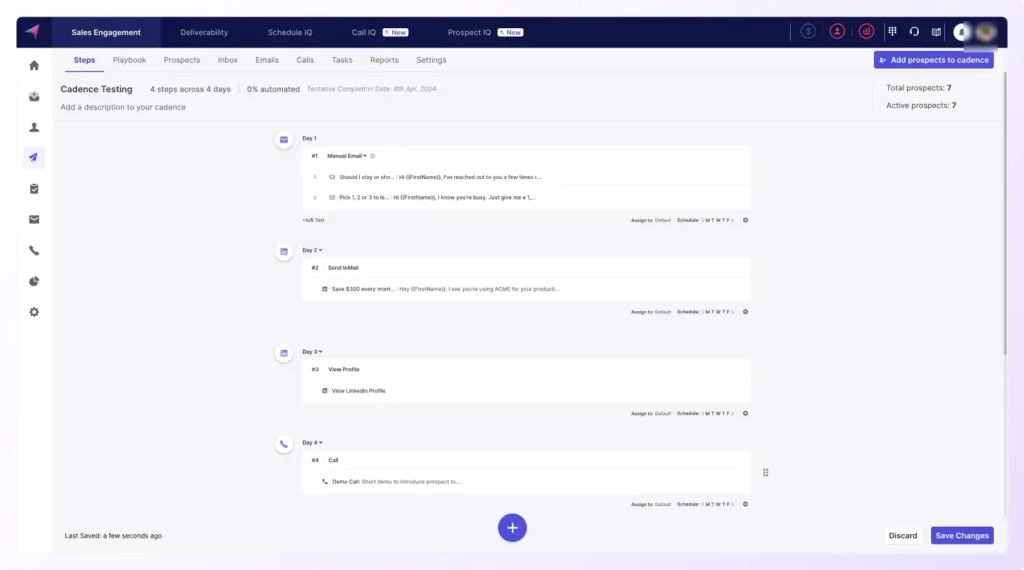
You can set up a sequence of communication touchpoints using Cadences on Klenty. These touchpoints can be across channels such as Emails, Calls, SMS, LinkedIn, and WhatsApp.
Klenty gives you full control over the frequency of your outreach and ensures your touchpoints actually reach prospects. The best part? You get to decide how you follow up with prospects - based on time intervals or trigger events.
Cadences help you engage prospects at the right time across the right channels and ensure that prospects are viewing and responding to your outreach.
ii) Multichannel Inbox

Unify all your inboxes and manage prospect conversations across all channels from the Multichannel inbox.
With the multi-channel inbox, you can avoid surfing through different channels and threads to retrace a conversation with your prospect. Or constantly hitting the refresh button, awaiting notifications across multiple channels.
Get into a state of flow and sidestep distractions from unwanted notifications.
iii) Playbooks
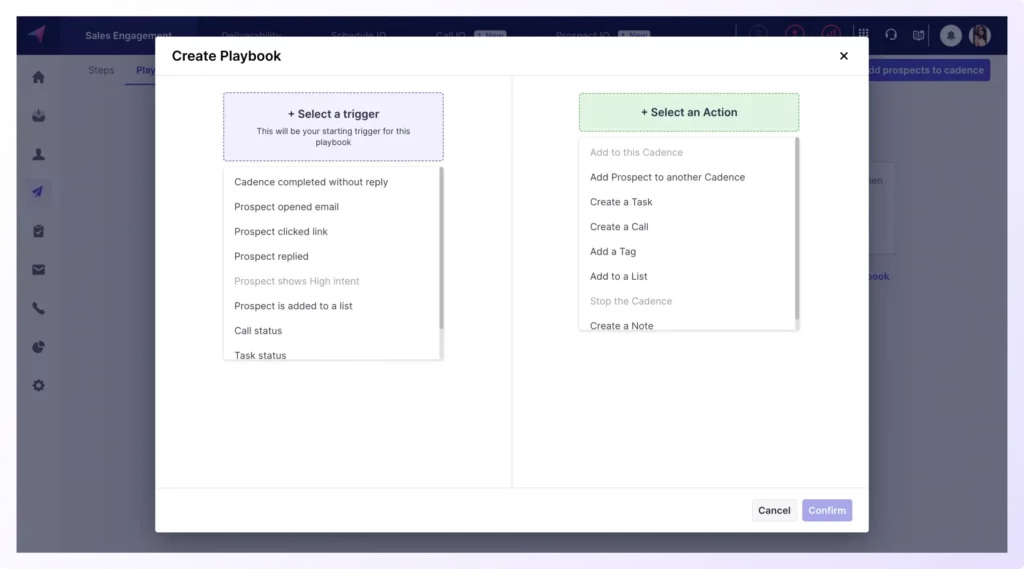
Playbooks help you detect your prospect's intent and use their level of intent to guide your next steps for every prospect. Automatically switch activities for prospects based on whether they’re cold, warm, or hot. Effortlessly combine cadences to build the perfect strategy for every prospect.
iv) Activity Center
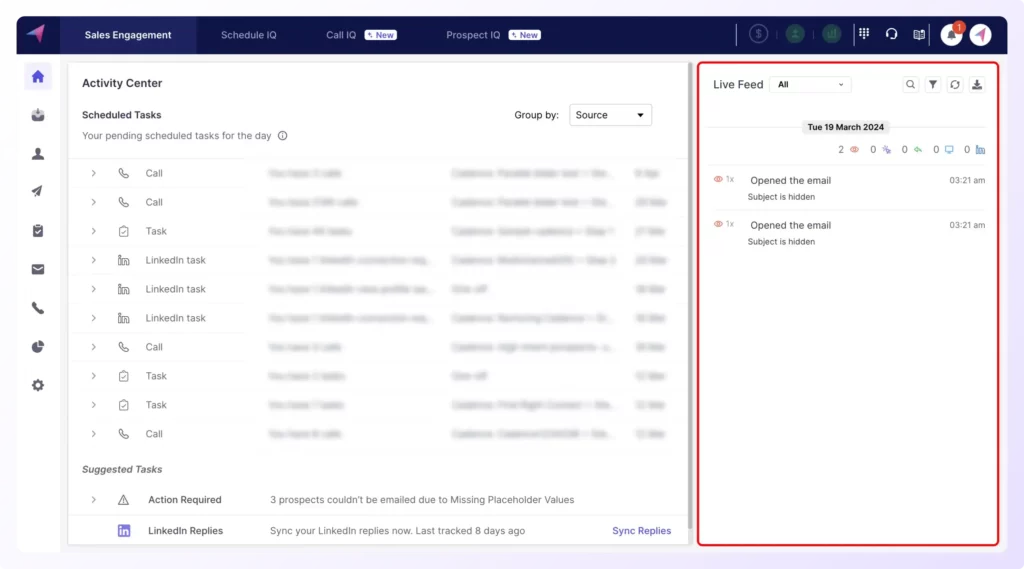
Reinvent the way you execute your tasks with Activity Center. It consolidates everything you need to get done today. You can group your tasks by source or by time zone. Be it emails, text messaging, calls, LinkedIn tasks, or any other demand that comes your way.
With the activity center, you can batch and execute your tasks, stay in a state of flow, and hit your activity volume targets.
v) Goals
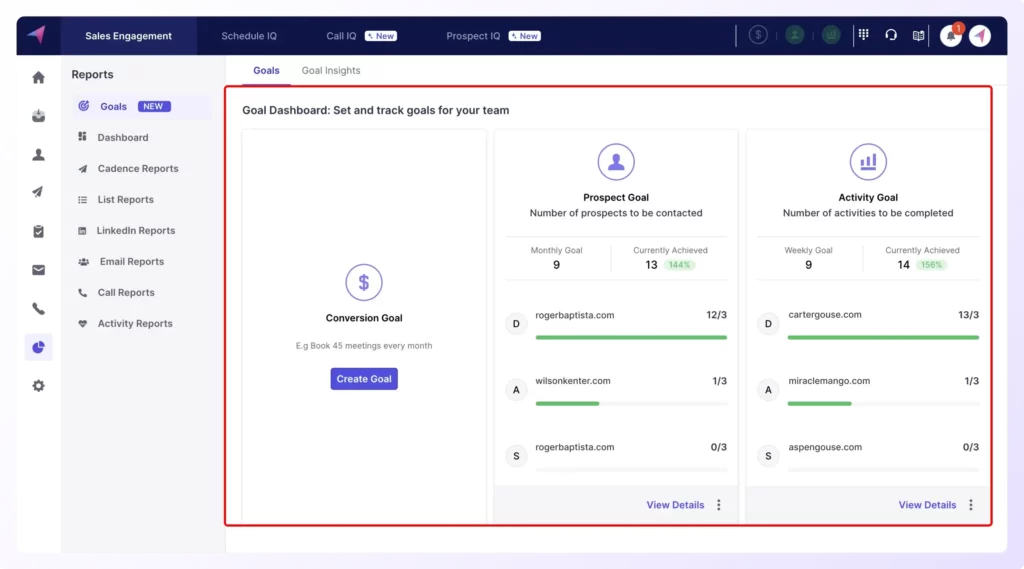
The Goals feature helps you track and visualize your team’s progress on the Goals dashboards and stay cognizant of their progress.
Set team-level or individual goals on Klenty to contact prospects, complete activities, and book meetings. And get a bird’s eye view of the team’s progress.
vi) Reports
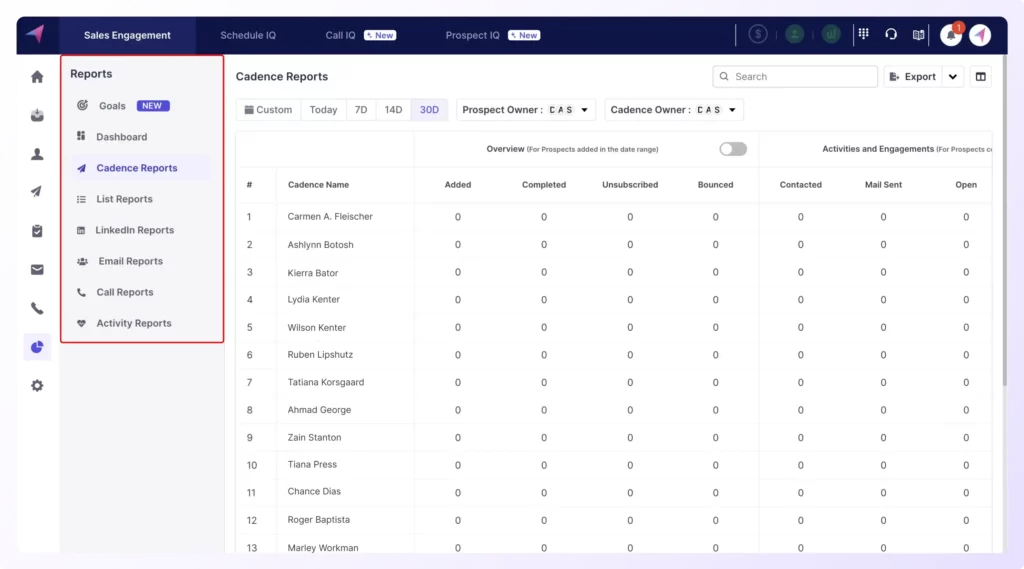
You get various levels of reporting such as cadence reports, activity reports, list reports, call reports, and team-level reports on Klenty. These reports help you understand the gaps in your
